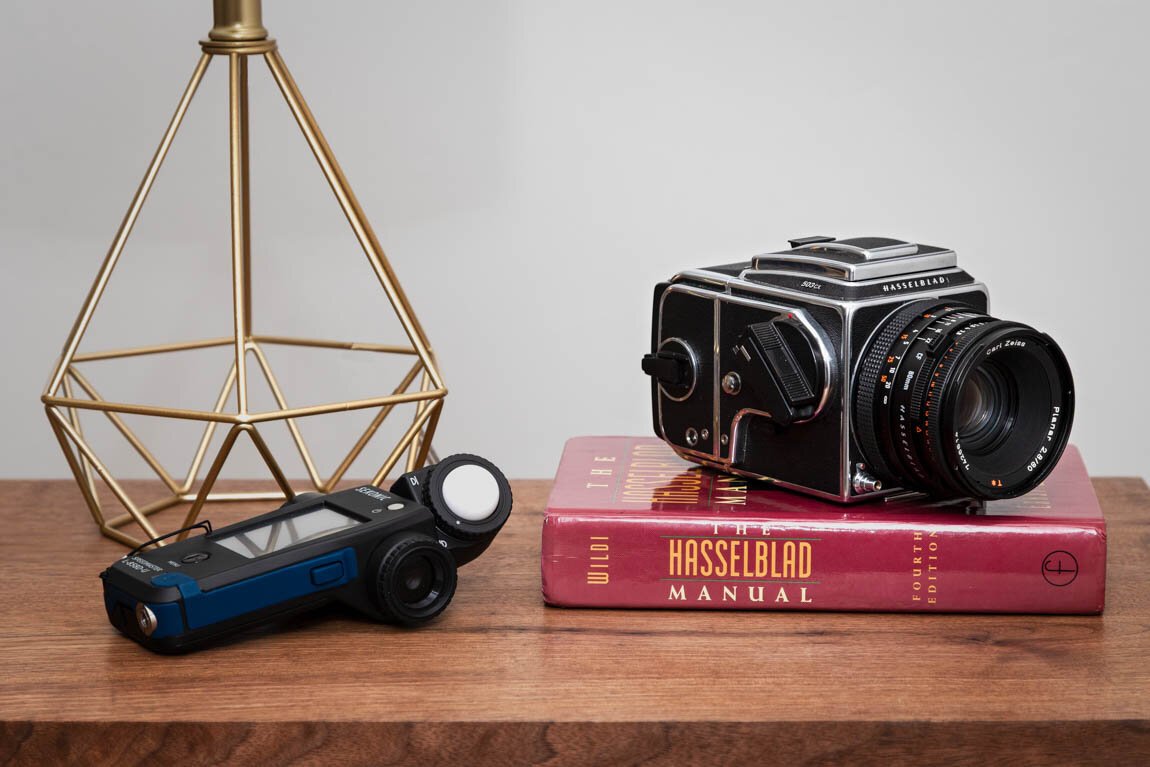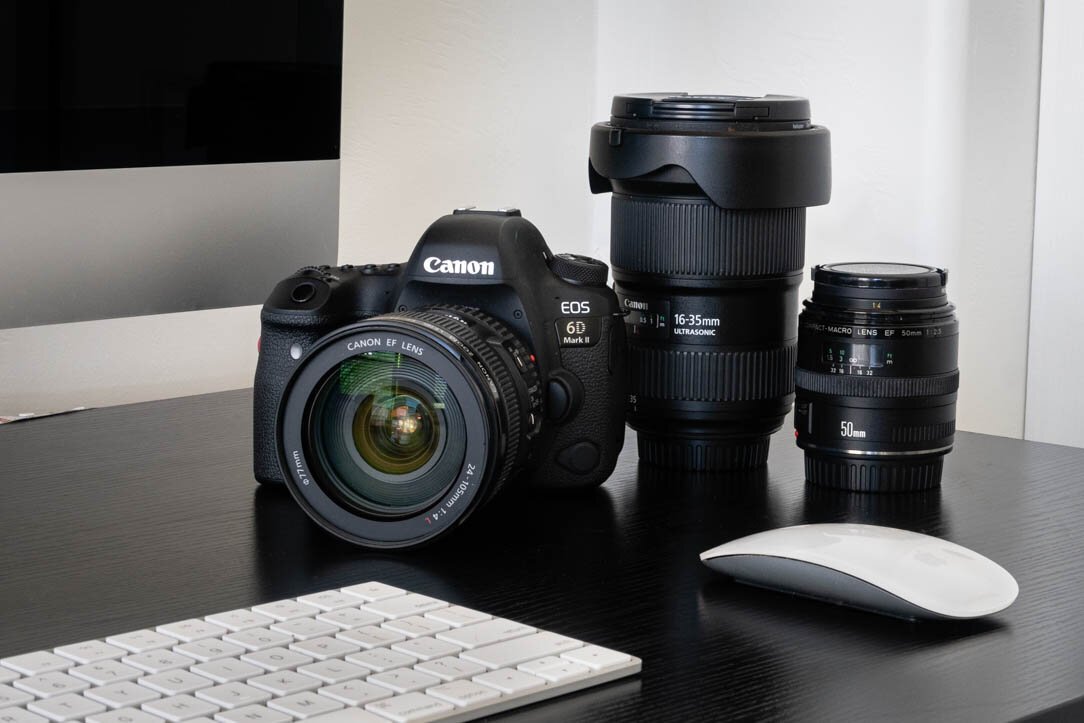MY CAMERAS
Here it is! The photography gear post that I have seen so many other photographers do. A good gear list never bores me, even though I have seen many “what’s in my bag” kind of YouTube videos and probably read just as many blog posts on the subject. So what do I use? (You might find an underlining theme…)
I have a mix of digital and film cameras, from point and shoot APS-C format all the way to 120 medium format. Each camera has its purpose and I make sure to use each one on a regular basis. Let’s start with the film cameras and work our way to the digital ones.
Left: Seknoic spot meter; Right: The Hassselblad Manual, 4th Edition by Ernst Wildi
My prized possession—the Hasselblad 503cx! I first learned about Hasselblads from my Dad after seeing one on a lunar landing TV special (I wanted to be an astronaut growing up!). Since that moment, they’ve always been in the back of my mind. So, a few months ago when a friend inspired me to search for a functional heirloom, I decided that a Hasselblad camera was the perfect choice. After a few weeks of searching, I found the right one. What makes this so exact one special to me is that the serial numbers correlate to the same year I was born.
The image quality from the decades old Zeiss lens is superb. Pair the glass with a 6x6 film negative and the combination is something else. No wonder NASA used them to document the early days of lunar space travel. The 503cx is a hassle…(blad) to carry, so when I want to shoot film while walking around town, I use my Canon AE-1.
Who doesn’t love a little Crosby, Stills & Nash?
It shoots 35mm film, which is the same size as a “full-frame” digital camera, like the Canon 6DII. However, the AE-1 is a fraction in size compared to the 6DII. This 35mm camera is my go-to when I want to shoot film. It is small, easy to use and coupled with the 50mm f/1.8 lens, it is sharp.
I develop and scan my black and white film negatives at home. The development was daunting at first, but after a couple attempts, the process worked itself out. For scanning, I use my Canon 6D Mark II and then I go into Photoshop to turn the negative into a positive.
Lenses: Canon 24-105mm f/4.0; Canon 16-35mm f/2.8; Canon 50mm f/2.8
My mainstay for shooting landscapes is the Canon 6D Mark II. Many reviewers were critical of this camera, saying the dynamic range left something to be desired. I have not had an issue with capturing enough details in the shadows while exposing for the highlights. My workhorse lens is the 24-105 f/4.0, but sometimes the combination of lens and body is too big, especially when Sara and I take the motorcycle out. When I want to travel light, I take along my point and shoot Canon G7X Mark II.
The coffee mug is from my parents’ travel blog! Shameless plug — FicksTravels
I originally bought the Canon G7X Mark II as a travel camera; it’s compact and has a splendid quality sensor for its size coupled with decent glass. It has handled everything I have put it through, including an austere overseas trip. I thought for sure some of the deafening noises I recorded would blow out the built-in microphone and that the extreme dusty conditions would plague the sensor and glass. However, the G7X still records crystal clear audio and takes sharp pictures—see the 6DII photo above!




